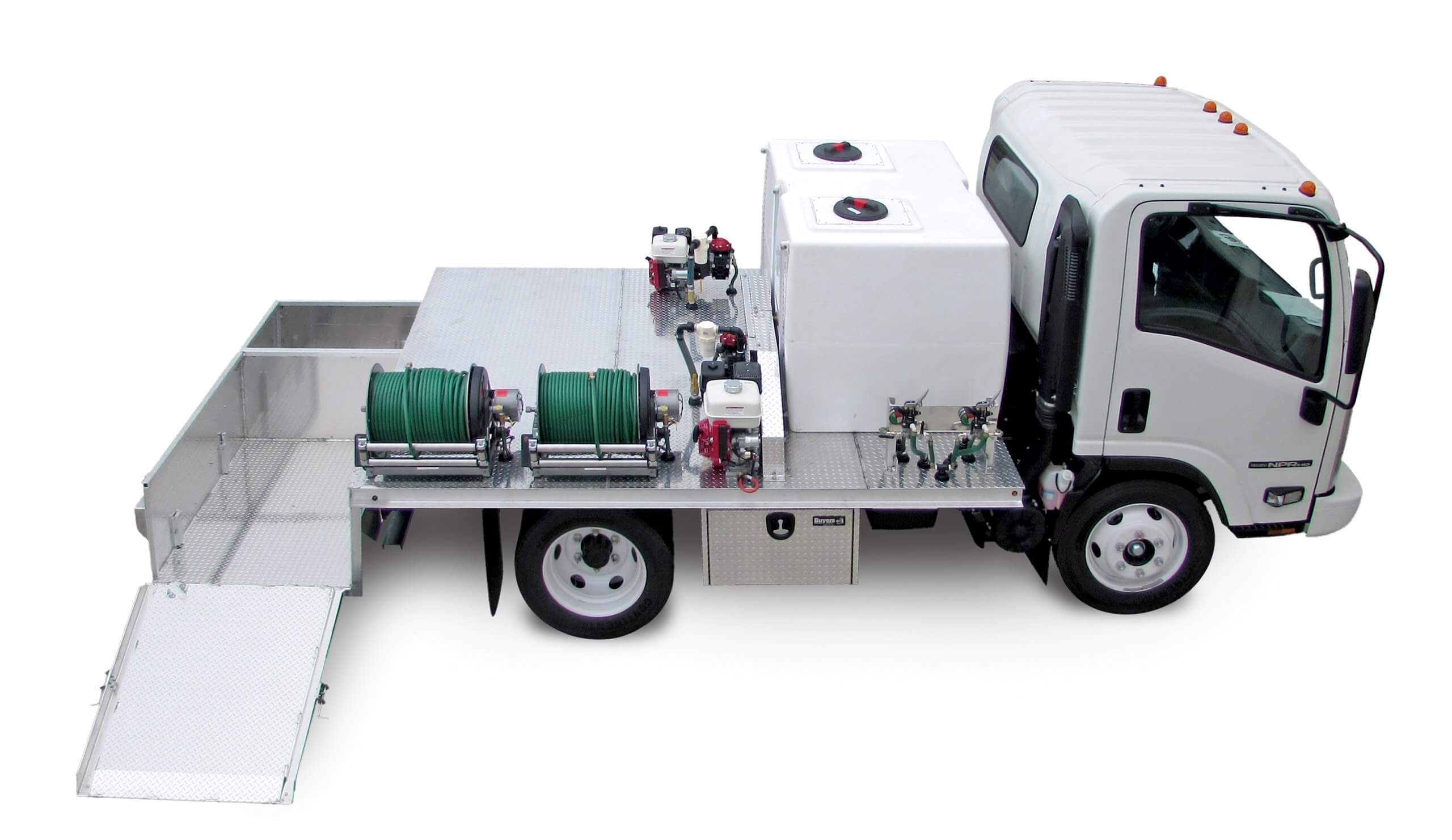As the temperature drops and winter settles in, lawn care professionals are faced with new challenges when using their spray equipment. Cold weather can create a unique set of safety hazards that, if not properly addressed, can lead to equipment malfunctions, safety risks, and unnecessary downtime. In this blog post, we’ll explore common winter hazards to watch out for and offer tips to help you keep your spray equipment and team safe during the colder months.
Common Winter Hazards for Spray Equipment
1. Frozen Components
Hazard: One of the most significant risks to spray equipment during the winter months is freezing temperatures. Water in tanks, hoses, or pumps can freeze, leading to cracks, blockages, or complete equipment failure.
Mitigation: Always empty your spray rig’s water tank and hoses after each use. If you’re storing your equipment outdoors, use insulation or covers to prevent freezing. For long-term storage, keep your spray equipment in a temperature-controlled environment whenever possible.
2. Slippery Surfaces
Hazard: Winter weather brings ice and snow to certain parts of the country, making outdoor surfaces slippery. If you’re working in cold, icy conditions, you may be at risk of slipping or falling while operating or maintaining your spray equipment.
Mitigation: Wear slip-resistant boots and use proper safety equipment, such as gloves with good grip, when handling your spray rig. Consider applying salt or sand to the ground around your work area to reduce ice buildup and improve traction.
4. Reduced Visibility
Hazard: Winter months often come with shorter days and reduced visibility due to snow, fog, or overcast skies. This can make it harder to monitor spray applications or notice potential hazards in your work area.
Mitigation: Equip your spray rig with additional lighting for better visibility in low-light conditions. Ensure that all lights and reflectors on the equipment are working properly and wear reflective clothing to increase visibility for yourself and others.
5. Overworked Equipment
Hazard: Spray equipment may be under more strain during winter as it can take longer to complete tasks in harsh conditions, or equipment may not function as efficiently due to cold weather.
Mitigation: Perform regular maintenance checks to ensure that all parts are working optimally, especially before starting work in the cold weather. Lubricate moving parts, check hoses for any signs of cracking, and ensure that all seals are intact to avoid wear and tear.
By staying vigilant and addressing the common hazards associated with cold weather, you can help prevent accidents, equipment failures, and downtime. Proper winter preparation and maintenance will ensure that your spray equipment performs reliably throughout the colder months and is ready to go when the warmer seasons arrive.
At Graham, we understand the importance of keeping your spray equipment in top condition, no matter the season. If you have any questions about winterizing your equipment or need assistance with maintaining it during the colder months, don’t hesitate to contact us. We’re here to help you keep your lawn care business running smoothly year-round.

